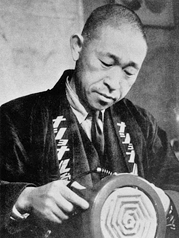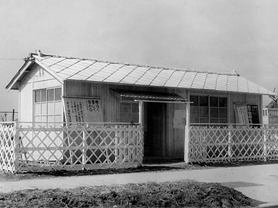1945
Up from ashes

View of desolated Osaka from Panasonic factory in Osaka.
View of desolated Osaka from Panasonic factory in Osaka.
Emergency management policy conference called the day after surrender
The company enters a time of uncertainty as postwar restrictions imperil its existence. Employee rolls drop precipitously from 26,000 to a low of 4,400, and the task of rebuilding the company from scratch begins.
The curtain fell on the Pacific War with Japan's unconditional surrender-on August 15, 1945. The war cost Japan three million lives, half of its former territory, and a fourth of its national assets. In addition, the Allied bombings had reduced many cities to rubble, and industrial production had all but halted.
Panasonic lost 32 factory and office facilities in Japan, mainly in Tokyo and Osaka, and its overseas factories and sales outlets were confiscated. Fortunately, the company's Head Office and main factories remained.
The day after the announcement of Japan's surrender, Matsushita called together his senior management and laid out plans for resuming production of consumer goods. On August 20, in a message to all employees, he said, "Production is the very foundation of our recovery. Let us reawaken the traditional Matsushita spirit, and complete the work of rebuilding the nation and enriching people's lives."
These words and Matsushita's strong spirit brought the company's employees out of the daze and shock of Japan's defeat. He allayed their fears, and inspired them to continue the company's manufacturing.

Konosuke Matsushita at work as he guides the company's postwar recovery.
However, the company staff shrank dramatically from 26,000 at the height of wartime activities to 15,000 at the end of 1945 as a large number of draftees, volunteers and students who had been assigned to work at the company during the war and many regular employees left.


Wagon wheels and prefabricated wooden houses are legacies of the company's struggle to regain financial footing following Japan's surrender. The defunct military government suspended all payments to its suppliers, leaving Panasonic with heavy debts to pay for its involuntary expansion. Meanwhile, postwar directives froze the company's assets and compelled it to divest its 32 subsidiaries. Several companies designated as reparations were removed from Matsushita control entirely.
The ill-fated wooden products ventures sought to capitalize on the company's hard-won wood-processing skills.